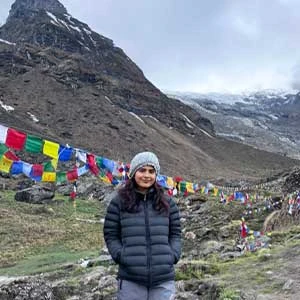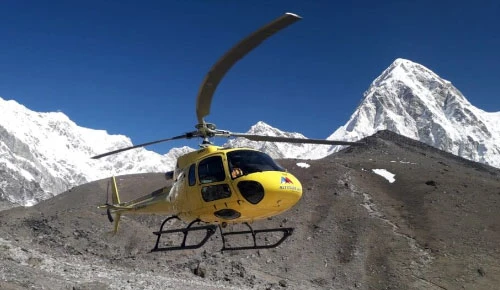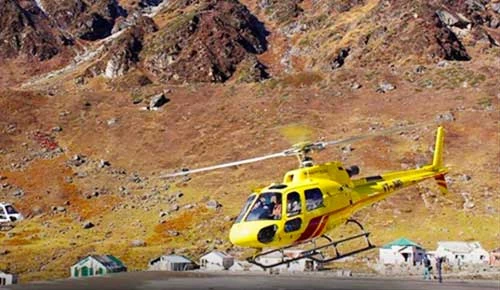Helambu Trek Difficulty: The Complete Guide for Beginners & Families
Helambu trek is classified as an easy and short trekking route in Nepal. But how easy can a trek be in this country where Mount Everest stands? To plan this trip, understanding how challenging a trek can be is a step to a pleasant and enjoyable trip.
Helambu offers the natural beauty and cultural and peaceful Himalayan scenes within a very short distance of Kathmandu. Occasionally, it’s better to remain in a moderate range of around 1,400 to 3,650 meters and then begin the trek to extreme altitudes like Everest or Manaslu. However, some beginners may find daily walks up and down, mountain climbs in the forest, and other more challenging sections exhausting.
This blog will break down the helambu trek difficulty level into four categories—the altitude level, walking hours level, terrain level, and preparation level regarding fitness level. If you are a new trekker or an experienced person, this blog will be helpful in deciding if Helambu is right for you or not and how to prepare for it.

5 Days Helambu Trek Facts
- Starting Point: Sundarijal (near Kathmandu)
- Highest Point: Tharepati (3,650m)
- Duration: 5 Days
- Trekking Hours: 5–7 hours per day
- Total Distance: around 70 km round trip
- Trek Region: Langtang Region, Central Nepal
- Difficulty Level: Easy trek
- Accommodation: Teahouse/lodge stay
- Highlights: Sherpa & Tamang villages, rhododendron forests, Himalayan views of Langtang, Dorje Lakpa & Gauri Shankar
Table of Contents
Helambu Trek Difficulty Level
The 5 Days Helambu Trek can be considered one of the easier treks in Nepal and it is for a good reason. In comparison with popular tracks such as the Everest Base Camp Trek and the Langtang Valley Trek, Helambu is also friendly for beginners. It is a happy balance of difficulty and sweetness: a great trek for someone with basic fitness. This trek is considered easier because of its low altitude. You will go to Tharepati Pass, which is at 3,650 meters. At 3,650 meters, you are well below 5,000 meters—where altitude sickness can present an issue. In this sense, the Trek is much safer, especially for first-timers, families, and people who want to avoid being extremely high, for instance, at the pass.

The trek has a generally excellent trail with some gentle inclinations through forested areas, short climbs, and trails through villages. You are trekking 5–7 hours a day, so it is not all that easy, but for most trekkers, if they maintain a steady pace, do a little bit of preparation, and arrive with an open mind, the trek is completely reasonable. Many other treks require you to cross ice or trek for 4–5 hours to reach a camp where people have been trekking for years to find a place to stay. The Helambu trek, on the other hand, has a teahouse or homestay every few hours, which makes it easy to handle and use.
Factors Affecting Helambu Trek Difficulty
The difficulty of the Helambu Trek depends on several key factors, such as trail conditions, altitude, daily walking hours, weather, and your overall fitness level. While the trek is considered easier compared to high-altitude routes like Everest or Annapurna, challenges such as steep climbs, unpredictable weather, and long walking days can still make it demanding. Understanding these factors in advance helps trekkers prepare properly and enjoy the journey with more confidence.
Trail Conditions
The Helambu trail is made up of wood, farm steps, stone steps & ridges. It gives hikers a fresh view all the time. Walking in thick woods feels like a dream, more so in spring. This is when the big red, pink, & white flowers bloom. Yet, woods can be a risk too: wet leaves, moss on rocks, & bare tree roots make the path bumpy. When it rains, the paths turn slick. A trek through millet, maize, and potato fields not only gives the legs some rest but also allows you to watch the locals doing activities such as clearing their farms or animal husbandry.
Altitude
Helambu may not rise as high as Everest or Manaslu, but it's still high up. Tharepati Pass hits 3,650 meters, and it does bring on some mild signs of altitude sickness. You might get a headache, feel less energy, or just feel a bit tired. The good part of slow going is that your body can get used to it. Even those new to hikes or those with kids tend to do just fine at this height. Helambu is great because it allows you to climb high enough for great views of the Himalayas without feeling rushed or out of breath. The slow rise lets your body ease into the high, so you can just enjoy the sights & not stress over getting sick.
Daily Walking Hours
A typical day on the Helambu trek involves 5–7 hours of walking. The total hours of trekking might scare you if you are a beginner, but with a proper pace, it is really feasible. One can easily get hooked on the long Helambu Trail, as it isn’t a monotonous walk; through various sceneries like forests, farmlands, climbing stairs, walking along a ridge, or passing in villages, nature even offers a daily break for the trekkers. It really is essential not to be in a hurry. Taking the time to snap photos, having a rest in a village teahouse, or just catching the view of the far-off summits actually lets the day pass quicker and makes it nicer. Moving at a steady pace and following your body’s signals is the secret to the trek being “Easy to Moderate”.

Weather Conditions
The weather has a massive influence while experiencing the trek. Spring and autumn tend to be long and comfortable, with dry weather, allowing one to take advantage of long treks and clean views of mountains. However, the monsoon season may make the tracks muddy and slippery, and the journey becomes more difficult as it becomes harder to follow the forest tracks. The mornings and late afternoons are cold in higher points; be sure to dress in layers.
Being prepared for weather changes ensures that the trek remains enjoyable rather than frustrating. A little rain or wind doesn’t make the trek extreme—it just adds variety and adventure to the experience.
Seasonal Changes
Each time of the year changes the trek. In spring, bright flowers make the trek cool, but wet paths from snow or rain can be a mess. The hot rains make trails green & full but with mud, so you need to be safe. Fall is often the best time: clear skies, dry paths, & fresh air. Cold time has frost on high grounds too, but it's silent & the snow looks great. Pick the right time, & your trek will be way good & less hard.
Physical Fitness and Preparation
Helambu is basically an easy trek but your physical preparedness will be a deciding factor. Engaging in some simple exercises such as walking, stair climbing, light strength training or yoga will help you acquire the stamina as well as the leg strength required for a climb as well as for an uneven trail. It is not necessary to be an athlete, but if you are fit, then at the end of each day you will have energy left rather than feeling tired. Being fit also makes it possible for you to enjoy the trek, as you will not be preoccupied with the thoughts of tired legs or getting short of breath, but rather you will be able to breathe the fresh air, mingle with locals and absorb the experience of the trek.
Backpack & Gear
An easy backpack justifies everything. With it, you can trek around without any problems, keeping all your must-have items safe and within your reach. With it, you can walk free and have all you need near & safe. The right stuff can save you when you hike, go to work, or fly. Your bag must hold key things: water & food, wet gear, & a warm coat. A big load gets tough when you climb or walk far. Plus, you can use walking poles, put on strong shoes & dress right to stay sure on bad or slick paths. Good gear makes the trip nice & safe, even in tough parts.
Mental Preparedness
On some days the path is like it never ends: you can climb the stairs made of stone for hours, talk along very narrow ridges that give you the shivers, and get stopped by the rain that you haven't anticipated. The nice thing is that it isn't really difficult as long as you remain calm, have a good frame of mind, and take your time. Some degree of focus and determination that you have to show in the trying moments turns the experience into valuable moments, so be ready in your mind to feel the maximum pleasure from your trek.
How to Prepare for the Helambu Trek?
Getting ready for the Helambu Trek is easier and more enjoyable, especially for beginners. A combination of physical training, appropriate gear, and effective planning ensures that you can trek comfortably and manage the challenges you may encounter along the way.
Here are some quick preparation tips:
- Do light cardio and strength exercises a few weeks before.
- Practice short hikes to build stamina.
- Pack comfortable trekking shoes and layered clothing.
- Carry essentials like water bottles, snacks, and a first-aid kit.
- Stay hydrated and eat well during the trek.
- Start walking early in the day to avoid afternoon weather changes.
- Travel with a guide or porter for safety and support.
Who Can Do the Helambu Trek?
The 5 Days Helambu Trek is ideal for a wide range of trekkers, from beginners to those with some prior trekking experience. Its moderate trails and manageable altitude make it suitable for families, solo travelers, and small groups looking for a shorter Himalayan adventure. Even first-time trekkers can comfortably complete the trek with basic fitness and preparation, while those seeking a scenic yet less strenuous route near Kathmandu will find it perfect. While age and health considerations are still important, most healthy adults and teenagers can access Helambu.
Fitness Level Required for the Helambu Trek
The Helambu trek has been termed easy in the Himalayas but after all, what is easy in the sense of hiking in Nepal? The Helambu trek is not designed only to be undertaken by someone with an elite physical competence, but it definitely will help; both the experience and physical recovery will be much nicer with a modicum of fitness and training. The trail has its fair share of steep uphill hikes, long hours of walking, and uneven trails, so it is highly advisable to do some conditioning before the trip. Here are the fitness requirements and physical activities you will likely do on this trek.
Here are the things you need to know:
- Moderate fitness level required
- Good cardiovascular endurance is helpful.
- Strong legs are needed for climbs and descents.
- Ability to walk 5–7 hours daily
- Mental toughness is important.
- Light backpack is recommended.
- Regular walking or hiking experience is beneficial.
- Flexibility and balance are helpful on uneven terrain.
- Ability to acclimatize to moderate altitude (~3,600m)
- Comfortable with stone steps and rocky paths
- Willingness to maintain a steady, slow pace
- Preparedness for varying weather conditions
- Basic strength training is recommended.
- Ability to carry a daypack comfortably
- No prior technical trekking experience needed
Final Thoughts
The Helambu Trek is not the most extreme trek in Nepal, but it needs preparation, endurance, and a cheerful attitude. Decent fitness, regular training, and the appropriate mentality are all most people need to complete the beautiful Himalayan trek. Even in case you continue to see whether this trek is a good fit or not, you must be aware of one thing: it is not speed, but rather a consistent pace, reasonable acclimatization, and enjoyment of the pace of movement within your limits.
Looking for a hassle-free way to do it? Explore our Helambu Trek—5 Days package designed for all experience levels—from guided treks with porter support to customized group departures. Book with Nepal Trek Adventures and experience the Helambu region the right way—safe, supported, and unforgettable.








